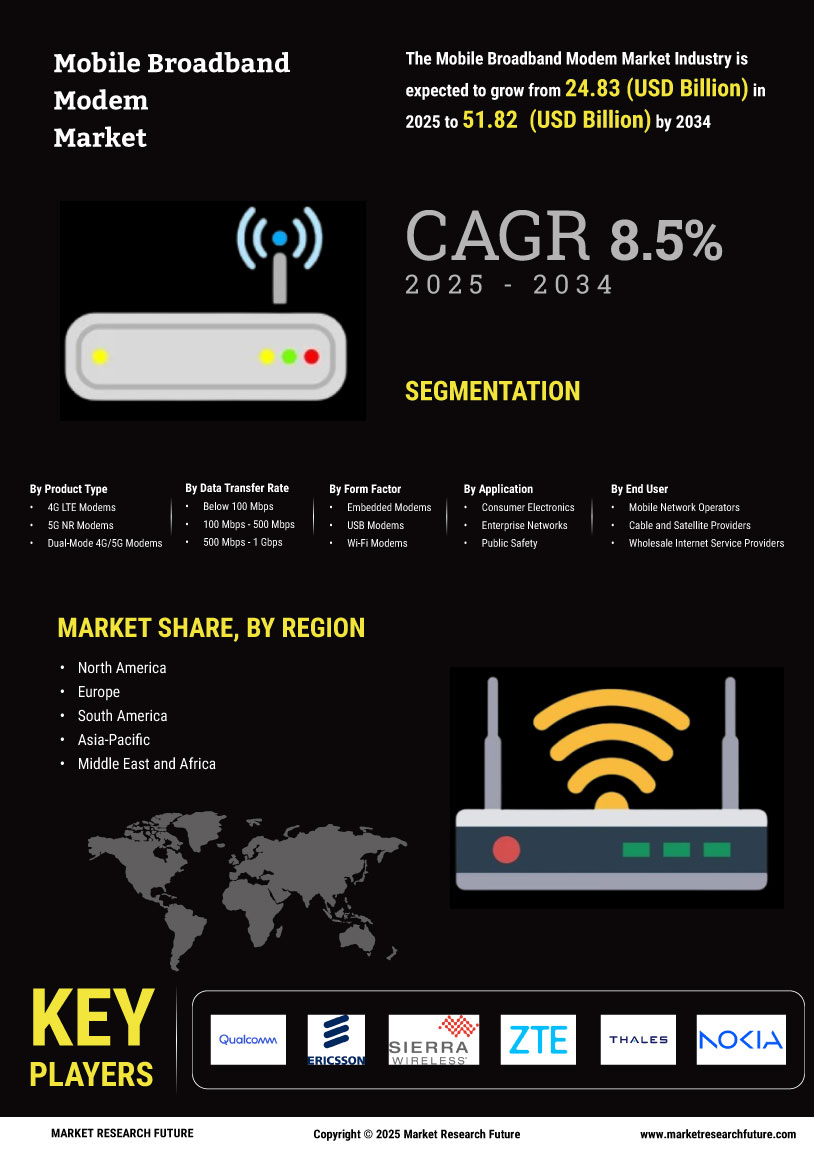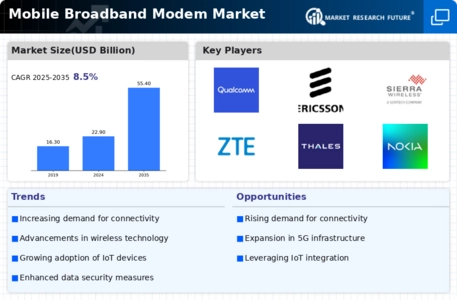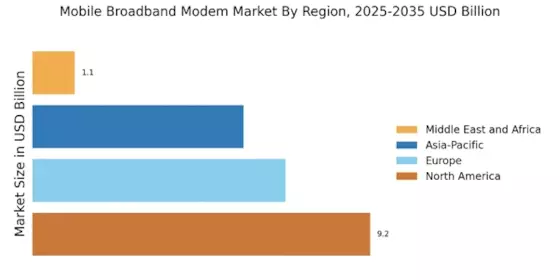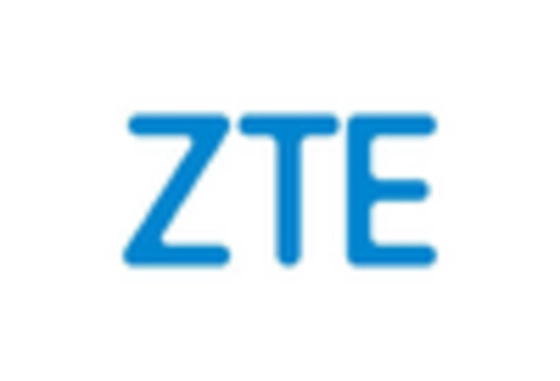Expansion of IoT Applications
The Mobile Broadband Modem Market is significantly influenced by the rapid expansion of Internet of Things (IoT) applications. As industries increasingly adopt IoT technologies, the demand for mobile broadband modems is likely to rise. These modems serve as critical enablers for connecting various IoT devices, facilitating real-time data transmission and communication. Market data indicates that the number of connected IoT devices is projected to exceed 30 billion by 2025, creating a substantial opportunity for the Mobile Broadband Modem Market. This growth is driven by sectors such as smart cities, healthcare, and industrial automation, where reliable and high-speed connectivity is essential. As a result, the Mobile Broadband Modem Market is expected to evolve, offering innovative solutions tailored to the specific requirements of IoT applications.
Increased Internet Penetration
The Mobile Broadband Modem Market is experiencing a surge in demand due to the increasing penetration of the internet across various regions. As more individuals and businesses seek reliable internet access, the need for mobile broadband modems has escalated. According to recent data, internet penetration rates have reached approximately 60% in many areas, driving the adoption of mobile broadband solutions. This trend is particularly evident in developing regions, where mobile broadband modems provide a cost-effective means of accessing the internet. The proliferation of smartphones and other connected devices further amplifies this demand, as users require seamless connectivity for their daily activities. Consequently, the Mobile Broadband Modem Market is poised for substantial growth as it adapts to meet the evolving needs of consumers and businesses alike.
Increased Focus on Mobile Security
The Mobile Broadband Modem Market is increasingly prioritizing mobile security as a critical driver of growth. With the rise in cyber threats and data breaches, consumers and businesses are becoming more aware of the importance of secure internet connections. This heightened awareness is prompting manufacturers to develop mobile broadband modems equipped with advanced security features, such as encryption and secure access protocols. Market data indicates that The Mobile Broadband Modem Market is projected to reach over 300 billion by 2025, highlighting the growing emphasis on security across all digital platforms. As users demand safer connectivity options, the Mobile Broadband Modem Market is likely to respond by integrating robust security measures into their products, thereby enhancing consumer trust and driving further adoption.
Shift Towards Wireless Technologies
The Mobile Broadband Modem Market is undergoing a notable shift towards wireless technologies, which is reshaping the landscape of connectivity solutions. As consumers increasingly favor wireless options over traditional wired connections, mobile broadband modems are becoming essential tools for accessing the internet. This shift is supported by advancements in wireless technology, such as 5G, which offers enhanced speed and reliability. Market data suggests that the adoption of 5G technology is expected to reach over 1 billion subscriptions by 2025, further propelling the demand for mobile broadband modems. This transition to wireless connectivity not only enhances user experience but also aligns with the growing trend of remote work and digital nomadism. As a result, the Mobile Broadband Modem Market is likely to thrive as it adapts to the evolving preferences of consumers.
Growing Demand for High-Speed Connectivity
The Mobile Broadband Modem Market is witnessing a growing demand for high-speed connectivity solutions. As consumers and businesses increasingly rely on data-intensive applications, the need for faster internet speeds has become paramount. Recent statistics reveal that the average global internet speed has improved significantly, with many regions now offering speeds exceeding 100 Mbps. This trend is driving the adoption of advanced mobile broadband modems capable of delivering high-speed internet access. Additionally, the rise of streaming services, online gaming, and cloud computing further fuels this demand, as users seek uninterrupted and reliable connectivity. Consequently, the Mobile Broadband Modem Market is likely to experience robust growth as manufacturers innovate to meet the escalating expectations for speed and performance.

















Leave a Comment